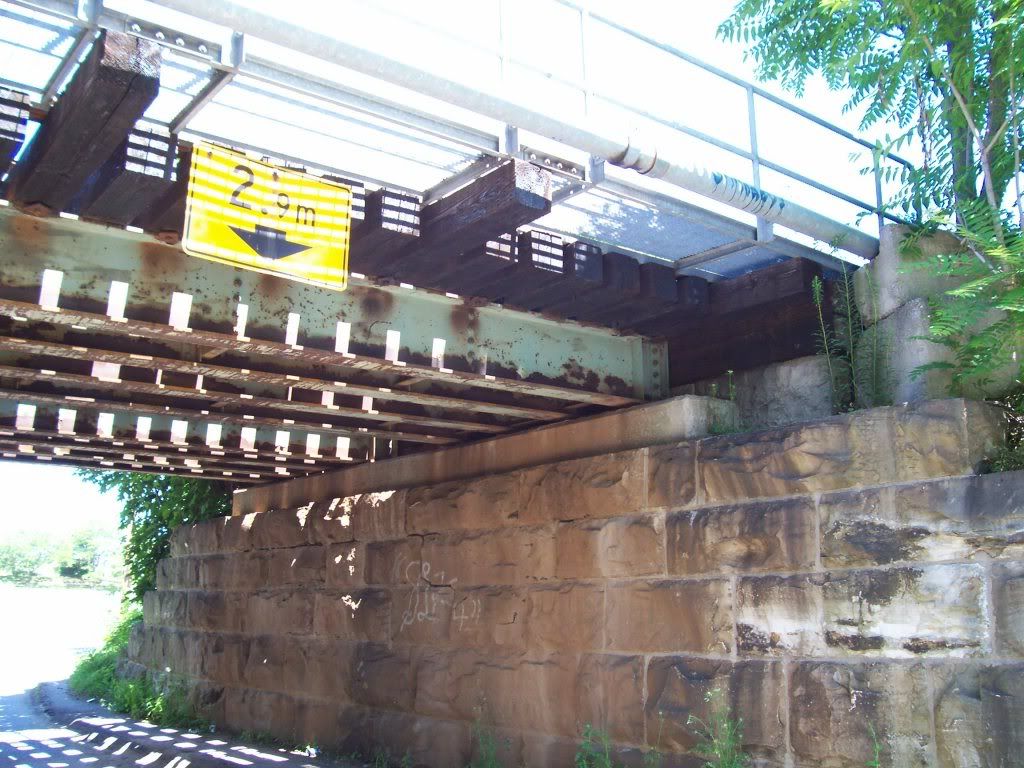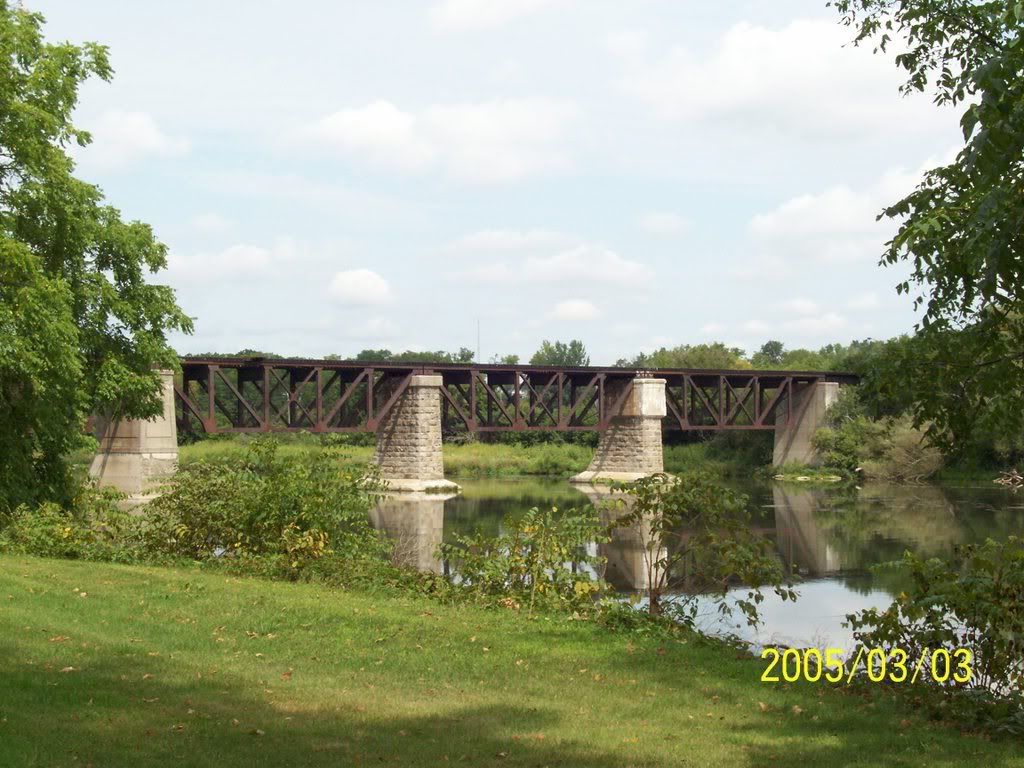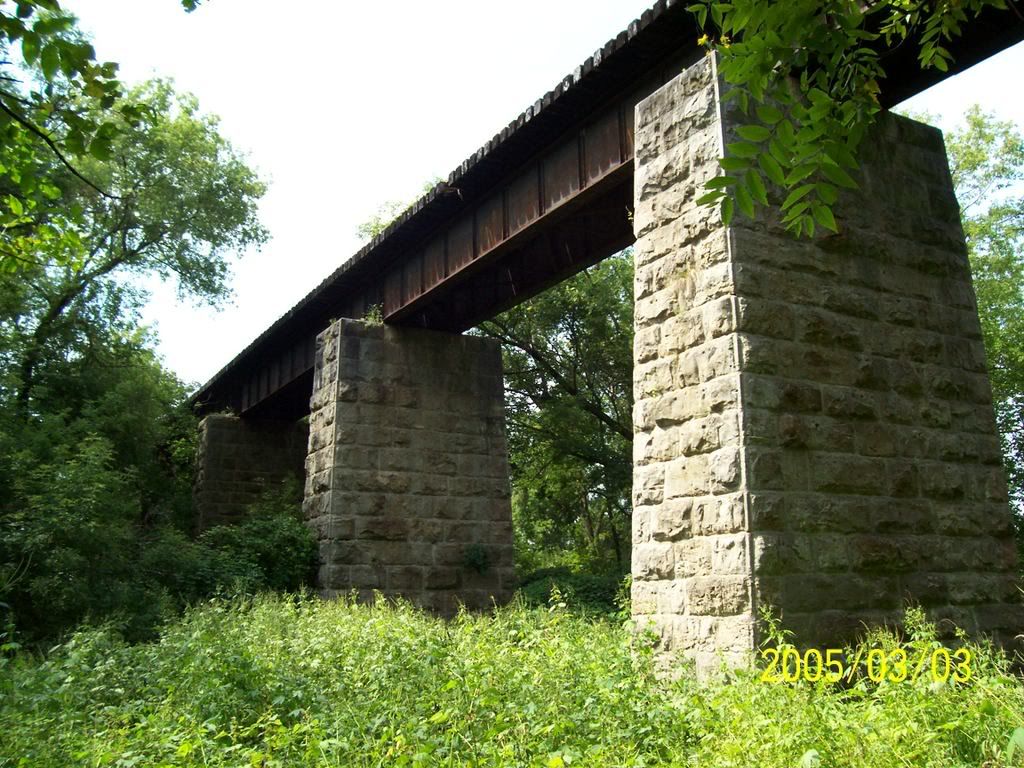Was a bridge pier made out of stone blocks or something similar, completely stone blocks all the way through, or was the core filled in with cement or something else as the height grew?
As always thanks.
Was a bridge pier made out of stone blocks or something similar, completely stone blocks all the way through, or was the core filled in with cement or something else as the height grew?
As always thanks.
Depending on the load, the current, the seasonal impact (ice floes coming down in numbers in the spring breakup and impacting the piers), scouring, any combination could be seen on bridges. I have seen timber cribs filled with large stones, hollow cribs, solid concrete,… I can’t personally recall seeing extensive stonework, though, at least not up close. This photo I took three years ago at Cisco in the Fraser Canyon shows a limestone-faced (?) pier with a clearly concrete cap. I can’t say it’s limestone all the way through, but my bet would be no…it’s concrete.
-Crandell

Each railroad probably had its own stadard. The PRR used 2’ x 3’ stone blocks.
That’s a great shot Crandell. The cement cap is clearly visible. Those CPR guy’s sure do nice weathering jobs on their piers.[(-D]
I think it’s overdone, Brent. It doesn’t look natural to me. [:o)]
Here’s a combination of stone and concrete, but I don’t know if the stone is built on another core (most likely I would think). This is in Knoxville, TN.
-Bob
When you see a pier or abutment that is part masonry and part concrete, it usually indicates a modification to the original. Quite likely the concrete cap at the Cisco bridge was added when the original cantilever was replaced by the present through trusses. The new steelwork was built outside the original, and so needed new bearing seats, quite possibly at a different elevation.
The other picture shows a much greater amount of concrete above the masonry. My guess is that the original spans were a deck truss design, and when that bridge was rebuilt the engineer changed to a through truss design to provide more clearance for the river (for either navigation or handle floods).
I seem to recall at least some of the masonry piers may have been filled with rock rather than the large cut stones of the exterior. Perhaps some form of grout or concrete was added to bind the interior material firmly. Concrete piers, on the other hand, are generally completely concrete.
John
To the OP–
The answer to your question is yes, bridge piers can be filled with anything, and they don’t always sit on bedrock either (sometimes the depth to rock was deemed “too great”).
The beautiful cut stone piers on the Walnut Street Bridge at Harrisburg, PA, which lost two spans in Susquehanna River flooding more than 10 years ago, were filled with earth, and may not have been completely 100% sitting on bedrock. The ice pushed one pier over–the historic Phoenixville Bridge Company trusses did not fail–but were pushed off by the ice and debris, and the pier failure. The rest of the bridge is still standing.
Many people consider the historic former-PRR Rockville Bridge across the Susquehanna River to be the “longest stone arch bridge in the world” but that is technically not true–although the PRR spent a great expense to bring millions of tons of cut stone in to build the bridge, the actual fact is the inside of the bridge is filled with concrete–so it is a hybrid construction of cut stone and concrete–and the longest known of its kind. Even then, over 100 years ago now, they knew they could not afford to construct an all-stone structure.
I can’t say if these on Twenty Mile Creek near Jordan Station, Ontario are solid stone or merely faced with stone, but there’s lots of such stone available from the nearby Niagara Escarpment:

This smaller bridge’s abutments, on the same former Great Western line between Hamilton, Ontario and Niagara Falls, uses similar stone. The bridge appears to have been raised some time after it was constructed, as indicated by the concrete directly beneath the span:

Another CNR bridge (also formerly Great Western) is this abandonned one at Cayuga, Ontario. Note the concrete modifications to this one, too:

The unusual edges at the corners lead me to think that this one may be merely faced with stone, but it may also be an old-time method of finishing the stone blocks used at the corners:

This is the eastern abutment, with iron ties apparently added at some time to repair damage:

Wayne
The Stone Arch Bridge in Minneapolis was built with loose fill on the inside.
Sorry for being tardy in responding to all the answers to my inquiry. (The kid had another Hockey Tournament this weekend) My question was answered, thank you all.
Wayne there was a bridge pier on the CN mainline in Ontario similar to this one. It had the iron rods sticking out of it on one of the corners. It looked more like a ladder up the corner of the pier and being a kid, that’s what I thought it was. We would climb up on to the pier using these things and jump in to the lake. Looking back I now know they were there for reinforcement.
Thanks for the memories.[B][:D]